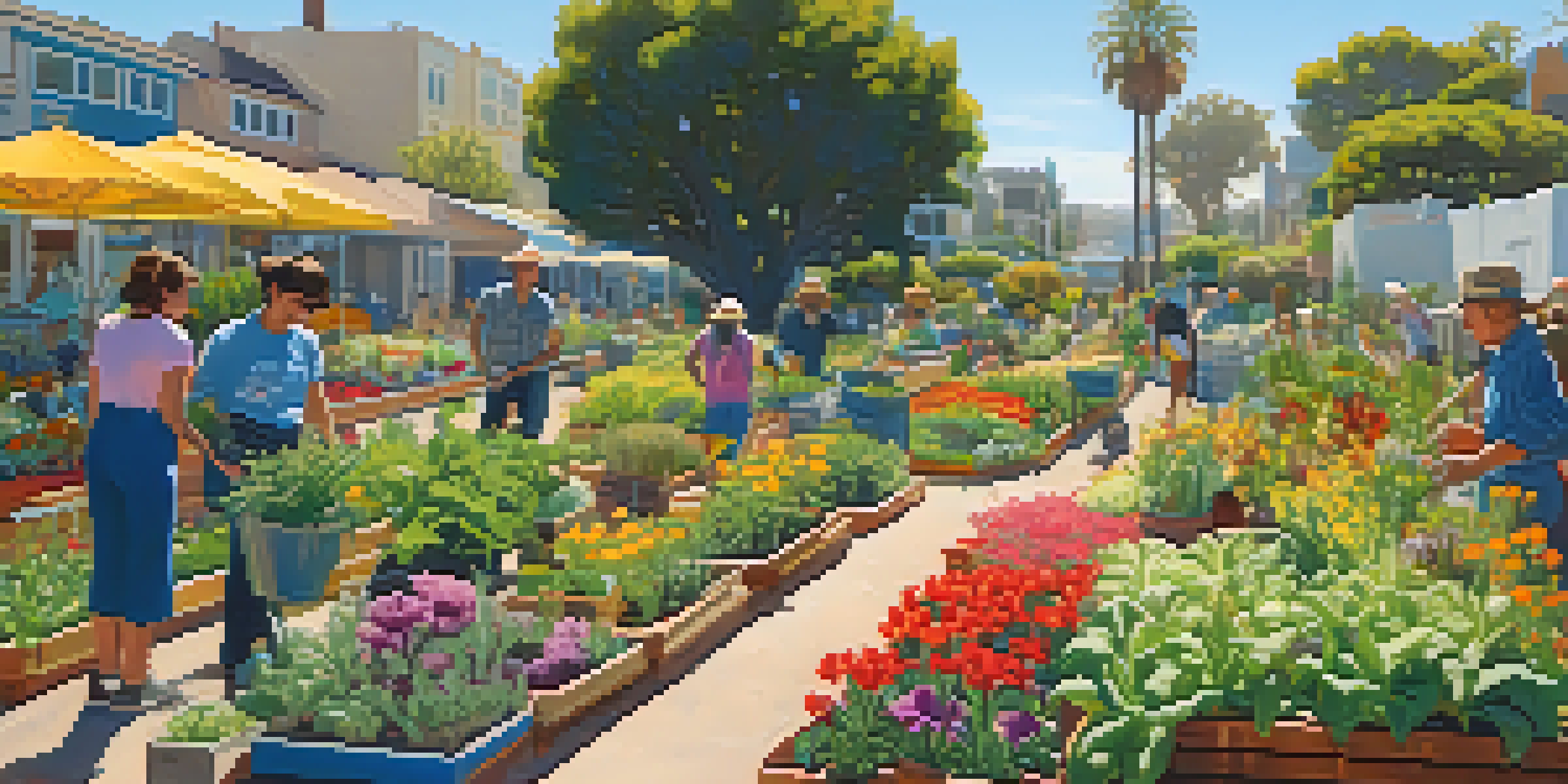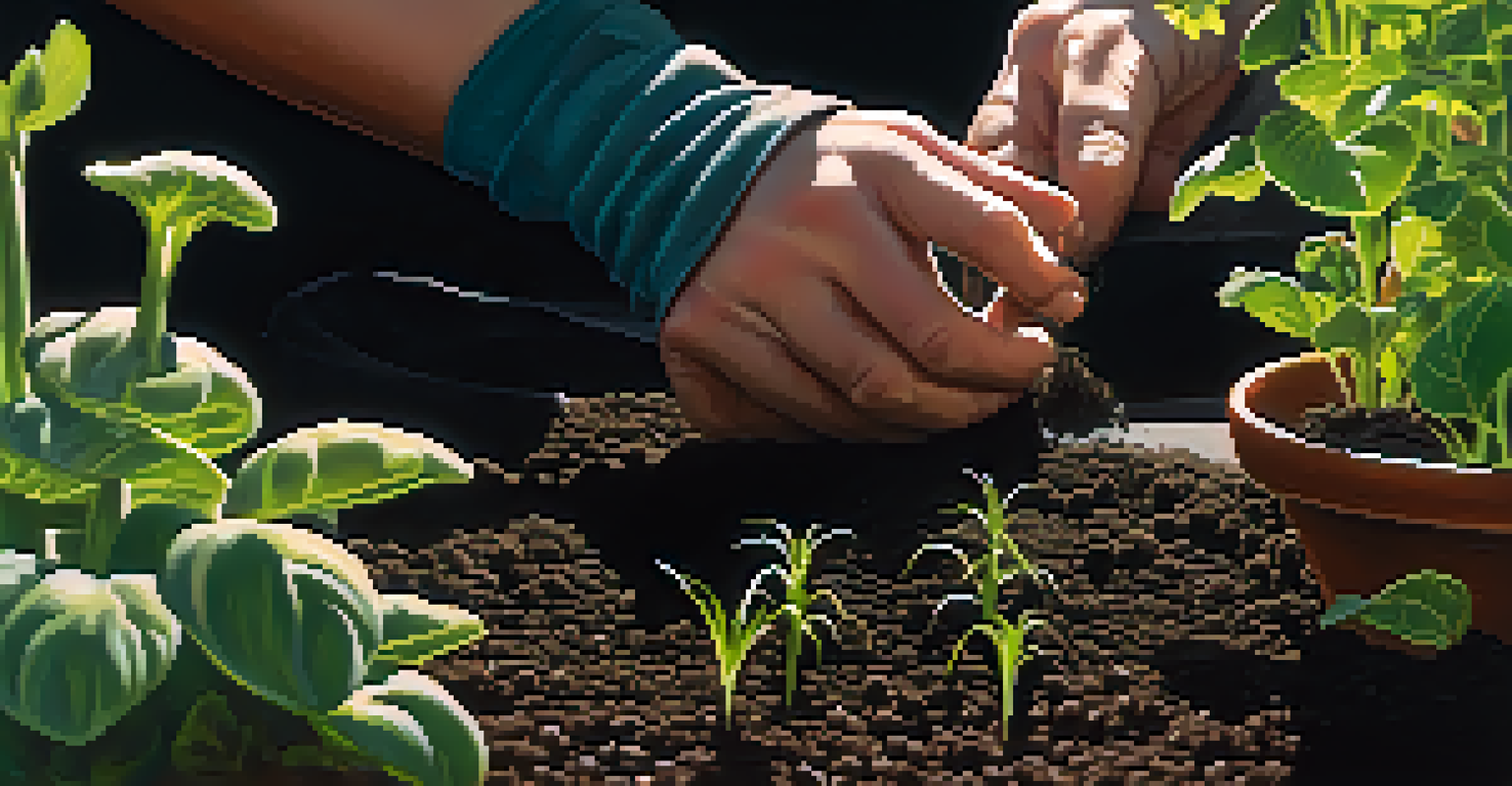Urban Agriculture: A Guide to Santa Monica Community Gardens

What is Urban Agriculture and Its Importance?
Urban agriculture refers to the practice of cultivating, processing, and distributing food in urban areas. This movement is gaining traction as cities look to enhance food security, promote sustainability, and foster community engagement. It addresses several challenges, including limited access to fresh produce and the need for green spaces in densely populated areas.
The future will be about the cities that are able to innovate and create space for urban agriculture.
The importance of urban agriculture extends beyond just food production. It helps improve air quality, supports biodiversity, and can even mitigate urban heat. City gardens can also serve as educational platforms, teaching residents about sustainable practices and the origins of their food.
In Santa Monica, urban agriculture plays a vital role in enhancing the local environment and community spirit. With numerous community gardens scattered throughout the city, residents have the opportunity to connect with nature and each other, cultivating not just plants, but friendships and shared values.
The Benefits of Community Gardens in Santa Monica
Community gardens offer a plethora of benefits for individuals and neighborhoods alike. They provide access to fresh, organic produce, which is essential for maintaining a healthy diet. Additionally, these gardens often operate on a volunteer basis, allowing residents to contribute to their upkeep while fostering a sense of ownership and pride.

Beyond the physical health benefits, community gardens also promote mental well-being. Gardening has been shown to reduce stress and anxiety, offering a therapeutic escape from the hustle and bustle of everyday life. Engaging with nature and nurturing plants can bring a sense of fulfillment and joy.
Urban Agriculture Enhances Community
Urban agriculture not only improves food security but also fosters community connections and engagement.
Furthermore, community gardens serve as a hub for social interaction. They bring together people from diverse backgrounds, encouraging collaboration and communication. This not only strengthens community bonds but also cultivates an inclusive atmosphere where everyone can learn and grow together.
Top Community Gardens to Visit in Santa Monica
Santa Monica boasts several community gardens, each with its unique charm and offerings. One standout is the Santa Monica Community Garden, where locals can rent plots to grow their own fruits and vegetables. This garden is a great place to meet fellow gardeners and share tips and produce.
Urban agriculture is not just about food production; it’s about building community and creating a sense of belonging.
Another popular spot is the Ocean Park Community Garden, which features a vibrant mix of plants and flowers. This garden is particularly known for its commitment to sustainable practices, including composting and organic gardening techniques. Visitors often enjoy the serene atmosphere and the beautiful blooms.
Lastly, the Virginia Avenue Park Community Garden provides a fantastic space for educational workshops and community events. This garden not only offers plots for individuals but also engages youth through gardening programs, fostering a deeper understanding of where food comes from and how to grow it.
How to Get Involved with Santa Monica's Community Gardens
Getting involved with community gardens in Santa Monica is easier than you might think. Most gardens welcome volunteers and offer opportunities for residents to participate in garden maintenance and events. Simply visiting a garden and speaking to fellow gardeners can be a great first step to becoming part of the community.
Many gardens also have waiting lists for individual plots, so don’t hesitate to sign up if you're interested in growing your own food. Even if you can’t secure a plot right away, there are often group activities where you can lend a hand and learn from experienced gardeners.
Community Gardens Boost Well-Being
Community gardens provide access to fresh produce while promoting mental health and social interaction among residents.
Additionally, local organizations frequently host workshops and training sessions focused on sustainable gardening practices. Participating in these events not only expands your knowledge but also connects you with like-minded individuals who share a passion for urban agriculture.
Tips for Starting Your Own Urban Garden
If you're inspired to start your own urban garden, there are a few key tips to keep in mind. First, assess the space you have available, whether it’s a balcony, backyard, or even a windowsill. Consider what plants thrive in your specific environment and choose varieties that suit your space and sunlight conditions.
Next, focus on soil quality; healthy soil is crucial for a thriving garden. You can enrich your soil with compost or organic fertilizers to provide essential nutrients. Don’t forget to plan your garden layout, allowing enough space for plants to grow and air to circulate.
Lastly, remember that gardening is a learning experience. Be patient and flexible as you navigate challenges like pests or weather changes. Celebrate your successes, and don’t be afraid to experiment with different plants and techniques along the way.
Sustainable Practices in Urban Agriculture
Sustainability is at the heart of urban agriculture, and it's essential for ensuring these practices can continue to benefit communities. By using organic methods, such as composting and natural pest control, gardeners can maintain a healthy ecosystem that supports both plants and wildlife. This approach also minimizes environmental impact, promoting cleaner air and soil.
Water conservation is another key aspect of sustainable gardening. Techniques like drip irrigation and rainwater harvesting can significantly reduce water usage while keeping plants healthy. Many community gardens in Santa Monica employ these methods, setting a great example for individuals interested in sustainable practices.
Sustainability is Key in Urban Farming
Implementing sustainable practices like composting and water conservation is essential for the longevity and health of urban gardens.
Lastly, urban gardeners often focus on biodiversity by planting a variety of species. This not only enhances resilience against pests but also supports pollinators, which are crucial for food production. By prioritizing biodiversity, community gardens contribute to a healthier urban landscape.
The Future of Urban Agriculture in Santa Monica
As urban populations continue to grow, the future of urban agriculture in Santa Monica looks promising. With increasing awareness about the importance of local food systems, there is a greater push for more community gardens and green spaces. Residents are becoming more engaged in the conversation about food security and sustainability.
Local government and organizations are recognizing the value of urban agriculture, often providing support through grants and resources for community gardening initiatives. This collaboration can lead to more accessible gardening spaces and educational programs, benefiting the entire community.

Ultimately, the evolution of urban agriculture in Santa Monica will depend on community involvement and support. By participating in local gardens and advocating for sustainable practices, residents can play a crucial role in shaping the future of food in their city.